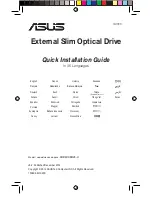
The physical layer is RS485, thus utilising the RS485 port
built into the frequency converter. The FC protocol
supports different telegram formats:
•
A short format of 8 bytes for process data.
•
A long format of 16 bytes that also includes a
parameter channel.
•
A format used for texts.
5.2.2 FC with Modbus RTU
The FC protocol provides access to the control word and
bus reference of the frequency converter.
The control word allows the Modbus master to control
several important functions of the frequency converter.
•
Start.
•
Stop of the frequency converter in various ways:
-
Coast stop.
-
Quick stop.
-
DC Brake stop.
-
Normal (ramp) stop.
•
Reset after a fault trip.
•
Run at various preset speeds.
•
Run in reverse.
•
Change of the active set-up.
•
Control of the 2 relays built into the frequency
converter.
The bus reference is commonly used for speed control. It is
also possible to access the parameters, read their values,
and where possible, write values to them. This permits a
range of control options, including controlling the setpoint
of the frequency converter when its internal PI controller is
used.
5.3 Network Configuration
Set the following parameters to enable the FC protocol for
the frequency converter.
Parameter
Setting
8-30 Protocol
FC
8-31 Address
1–126
8-32 Baud Rate
2400–115200
8-33 Parity / Stop Bits
Even parity, 1 stop bit (default)
Table 5.3 Parameters to Enable the Protocol
5.4 FC Protocol Message Framing Structure
5.4.1 Content of a Character (byte)
Each character transferred begins with a start bit. Then 8
data bits are transferred, corresponding to a byte. Each
character is secured via a parity bit. This bit is set at "1"
when it reaches parity. Parity is when there are an equal
number of 1s in the 8 data bits and the parity bit in total.
A stop bit completes a character, consisting of 11 bits in
all.
0
1
3
2
4
5
6
7
195NA036.10
Start
bit
Even Stop
Parity bit
Illustration 5.3 Content of a Character
5.4.2 Telegram Structure
Each telegram has the following structure:
1.
Start character (STX)=02 hex.
2.
A byte denoting the telegram length (LGE).
3.
A byte denoting the frequency converter address
(ADR).
A number of data bytes (variable, depending on the type
of telegram) follows.
A data control byte (BCC) completes the telegram.
STX
LGE
ADR
DATA
BCC
195NA099.10
Illustration 5.4 Telegram Structure
5.4.3 Telegram Length (LGE)
The telegram length is the number of data bytes plus the
address byte ADR and the data control byte BCC.
4 data bytes
LGE=4+1+1=6 bytes
12 data bytes
LGE=12+1+1=14 bytes
Telegrams containing texts
10
1)
+n bytes
Table 5.4 Length of Telegrams
1) The 10 represents the fixed characters, while the “n” is variable
(depending on the length of the text).
RS485 Installation and Set-...
Design Guide
62
Danfoss A/S © 09/2014 All rights reserved.
MG06B402
5
5
















































